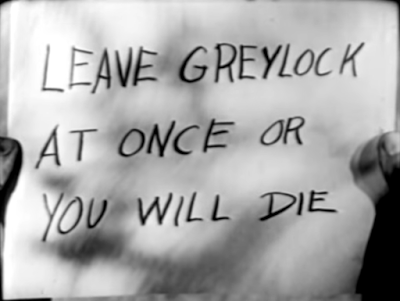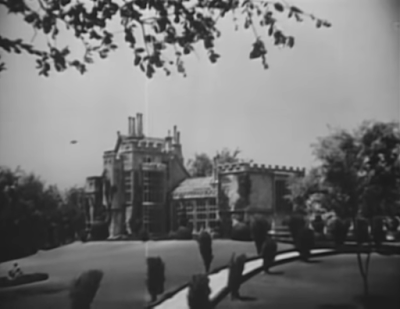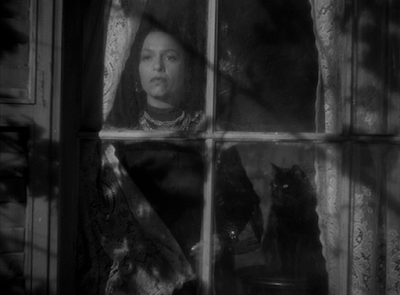Welcome to the Denham Sanity Trial, where the relatives of eccentric Aunt Cassie are hoping the judge will have her committed so that they can get their hands on her $3m estate and house in the mountains... At least, that's the plan - and that's the motive - for a MURDER BY INVITATION!
19/11/2020
Murder by Invitation
02/11/2020
Bulldog Drummond's Secret Police
By Jove! Some rotter's made a dash for the secret treasure of Rockingham Towers! It's upper-class twittery all the way in this 1939 entry in Paramount's gentleman-adventurer series, BULLDOG DRUMMOND'S SECRET POLICE...
RATING: 🕸🕸
01/11/2020
The Cat and the Canary
Originally staged on Broadway in 1922, first filmed as a silent movie in 1927, then again with sound in 1930 (but since lost)... Super-funny and super-scary, it's 1939's THE CAT AND THE CANARY!
We open on the misty waters of the Louisiana Bayou, as lawyer Crosby (George Zucco) is ferried to his next appointment. "Anyone else living around the old Norman place?" he asks his guide. "Not people," the boatman replies, tracing a portentous circle in the air with his hand. In our first hint of the chills to come, the background music swells into a eerie, drawling squeal...
By the end of the 1930s, the Old Dark House genre had fallen into a predictably silly and largely parodic pattern, but The Cat and the Canary hit the reset button - and hard. Here was a film from Paramount Pictures that stole a sidelong glance at the still-successful horror films of rival studio, Universal, before pouncing over and dragging back a handful of real fear to sprinkle liberally into the Old Dark House formula. Don't let anyone tell you that the humour of The Cat and the Canary outweighs the horror, because this cat has claws!
The structure follows the classic suspense pattern, later exemplified by Hitchcock, who liked to pace his films around three crescendos, or 'bumps' as he called them. Greasing the wheels of the roller coaster is the comedy - of which there's plenty, and it's plenty funny - provided in the form of witty, fast-paced dialogue. Most of the zingers come from leading man Bob Hope, who, as actor Wally Campbell, is familiar with the mystery genre and even comments on the three-act nature of the nightmare unfolding around him.
Wally is one of six relatives gathered for the reading of a will at the aforementioned Old Norman Place, now occupied only by former housekeeper Miss Lu (Gale Sondergaard) and her black cat. Needless to say, not all of the relations are going to come away from the meeting satisfied, meaning that, when the sole heir is revealed (in this case, Paulette Goddard) several others will be left with a motive for murder.







